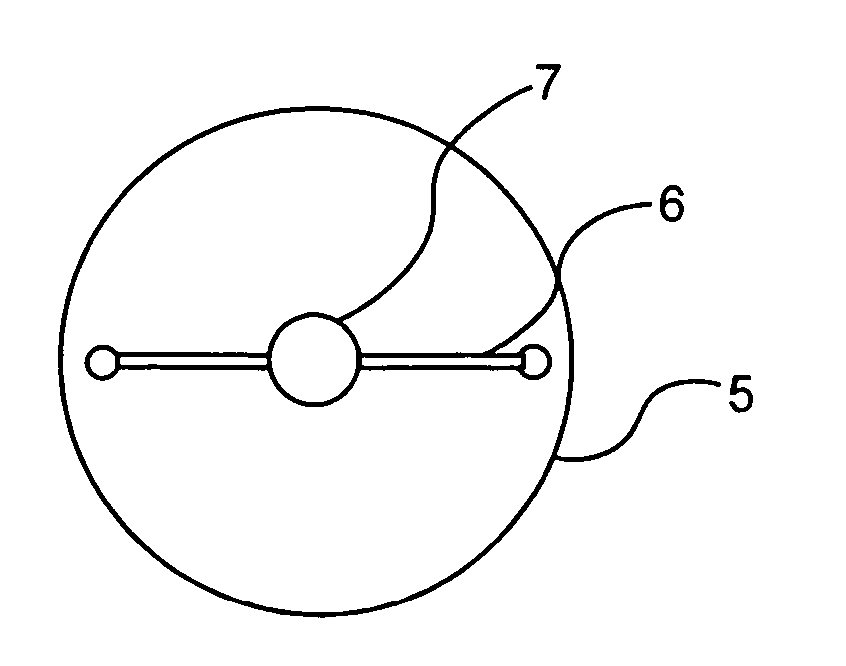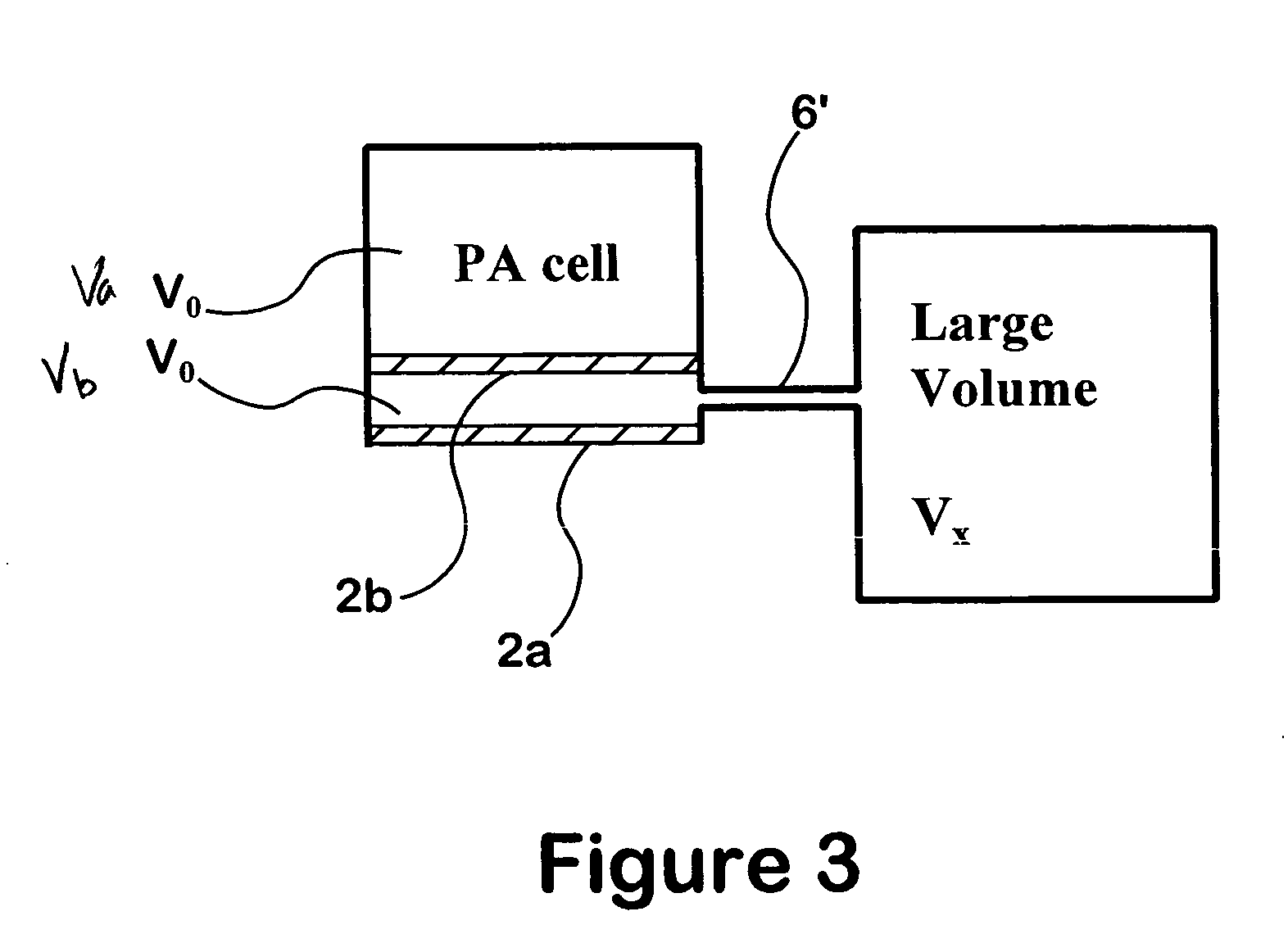Gas sensors
a technology of gas sensors and sensors, applied in the field of gas sensors, can solve the problems of increased response time, corresponding loss of responsiveness to changing signal levels, and inability to detect the output signal of diffusive photoacoustic sensors, so as to reduce external noise and adequate response time
- Summary
- Abstract
- Description
- Claims
- Application Information
AI Technical Summary
Benefits of technology
Problems solved by technology
Method used
Image
Examples
Embodiment Construction
[0023] An embodiment of a diffusive, non-resonant photoacoustic methane detector of the present invention is illustrated in FIG. 1. Reference is made to U.S. Pat. No. 4,740,086, the disclosure of which is incorporated by reference as if fully set forth herein, for the general principles of operation and construction of a photoacoustic sensor / detector. In the embodiment of FIG. 1, an opening within gas inlet 4 of photoacoustic detector 1 is preferably covered with a porous material such as a first metal sinter disk 2a, which permits the diffusion of molecules of the gas species of interest (that is, the analyte gas or gases) into sensing (or measurement) cell 3 of photoacoustic detector 1. As known in the art, first sinter disk 2a acts to attenuate external sources of pressure waves by impeding the progress of air pressure waves incident upon gas inlet 4, while offering only minimal resistance to the diffusion of gas molecules into photoacoustic detector 1 from gas inlet 4. In the em...
PUM
| Property | Measurement | Unit |
|---|---|---|
| inner diameter | aaaaa | aaaaa |
| thickness | aaaaa | aaaaa |
| thickness | aaaaa | aaaaa |
Abstract
Description
Claims
Application Information
 Login to View More
Login to View More - R&D
- Intellectual Property
- Life Sciences
- Materials
- Tech Scout
- Unparalleled Data Quality
- Higher Quality Content
- 60% Fewer Hallucinations
Browse by: Latest US Patents, China's latest patents, Technical Efficacy Thesaurus, Application Domain, Technology Topic, Popular Technical Reports.
© 2025 PatSnap. All rights reserved.Legal|Privacy policy|Modern Slavery Act Transparency Statement|Sitemap|About US| Contact US: help@patsnap.com



